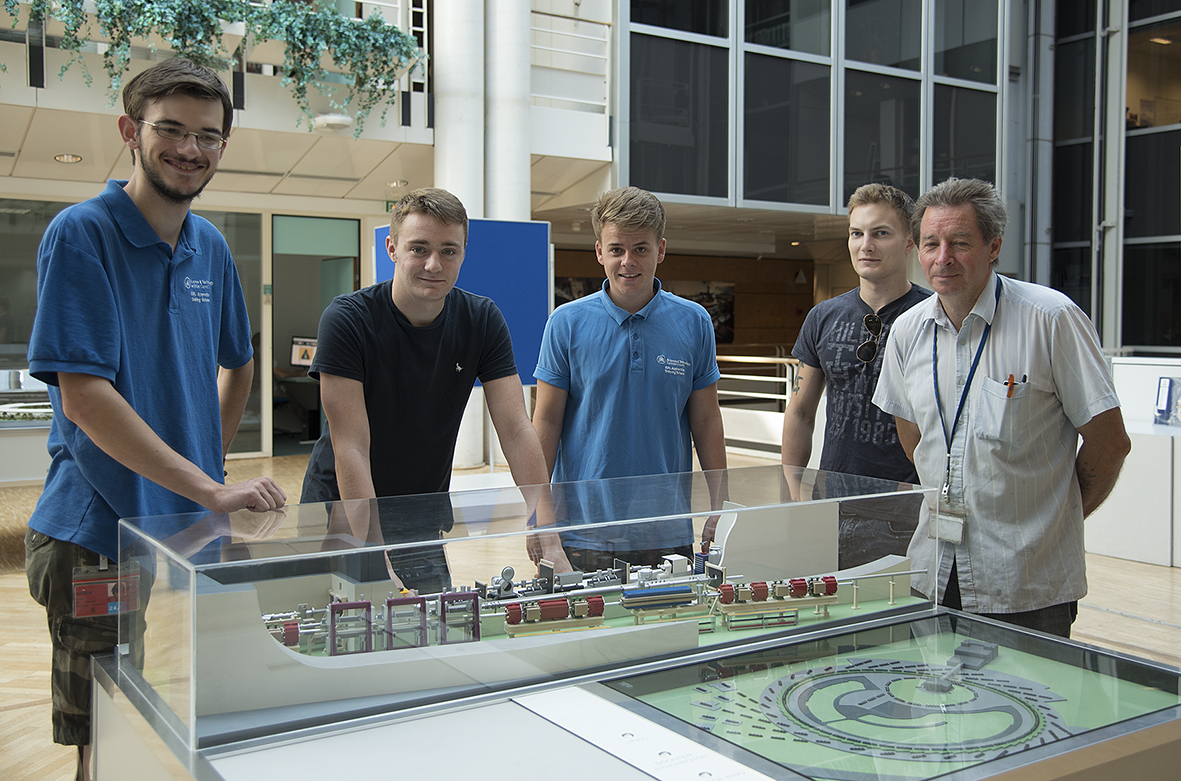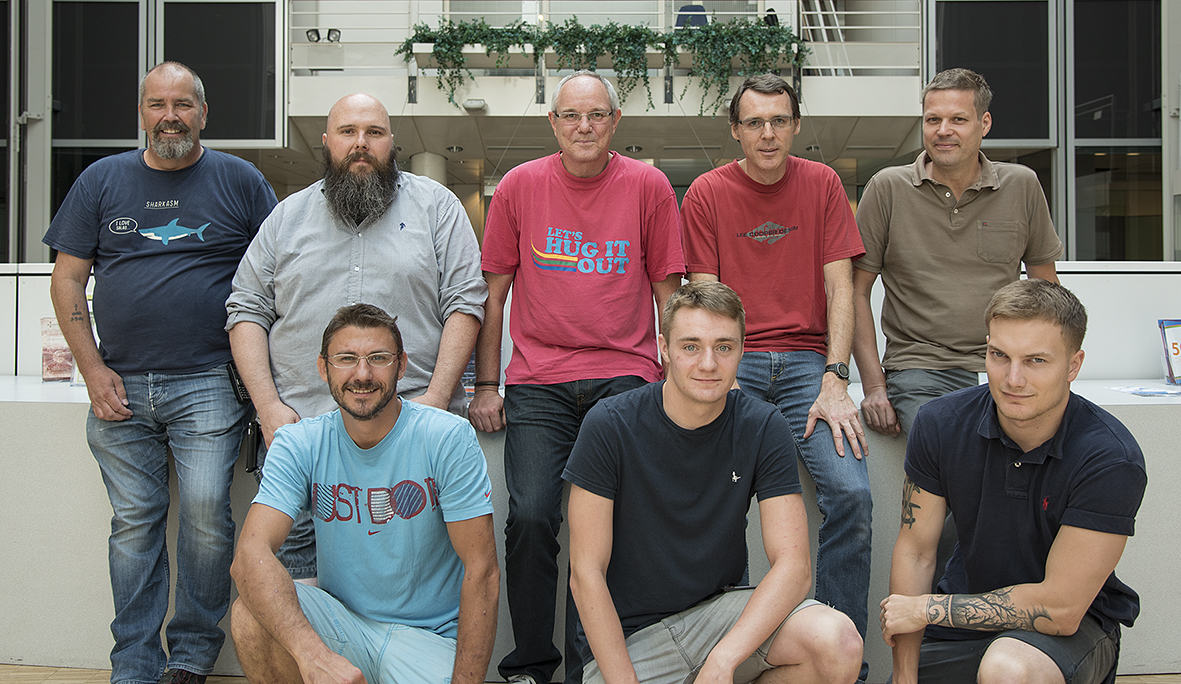- Home
- News
- General News
- A seasonal batch...
A seasonal batch of apprentices
23-07-2015
Every year the ESRF offers over a hundred technical and administrative traineeships. It also plays temporary host to apprenticeships offered by other institutes, for example the Science and Technology Facilities Council (STFC) in the UK, whose apprentices are welcomed for a three-week placement at the ESRF and ILL in July every year. We met this year's batch of young UK apprentices to find out what happens on these placements.
Proudly sporting their STFC blue polo shirts, this year's apprentices seem just as enthusiastic about their three week placement as they are about their total immersion into the French language and culture. Curious and thirsty for knowledge, since the beginning of July these youths have soaked up every ounce of novelty within their reach.
Luke Benson, Harry Moore, Issac Symonds and Harry Watts, the four apprentices hosted by the ESRF, arrived in Grenoble just in time for the 14th July national celebrations and right in the midst of the exceptional heatwave.
They learned about the placement at the ESRF while looking for an apprenticeship, then by word of mouth once arriving at STFC. "The placement at the ESRF figures high up in the apprenticeship programme, it's a good selling point", says Harry M.
"Our tutors have been great - really helpful and patient, generous with their time", says Harry Watts. And not just in the work context. "After a couple of really tough nights due to the heat, Keith, our tutor, took us to the shopping centre after work to buy some fans. That helped with the sleep deficit!"
Today, Harry M. and Luke are working to make a support rail to hold a monochromator housed in the experimental hutch of the XMAS beamline. Last week, Harry W. and Issac spent most of their time changing and repairing vacuum vessels following a power cut. At other times, they've been machining plates and pins according to orders placed by the beamlines. They'd like to stay longer. "It's a shame the placement only lasts three weeks, if it were longer we could get the chance to work on a bigger project", says Issac Symonds.
Harry Watts in the mechanical workshop.
It's short, but intense. Days are a mixture of hands-on work, learning about the beamlines, interacting with the many different staff profiles, intensively learning French, visiting the site and carrying out essential administration for safety or access.
The placement gives the trainees a great opportunity to see how institutes organise themselves in different ways. Harry W. was impressed by the way the ESRF mixes disciplines within the intervention groups, getting electronics, electrics and mechanics people to work together to optimise communication and reduce the time needed to fix a problem.
Keith Baldock, one of the tutors and technician in precision adjustment and measurements, enjoys managing the trainees but recognises the personal investment and commitment required from the tutor. "Taking on an apprentice takes a fair amount of preparation. It's essential to understand that they are here to learn and not to provide extra manpower." Keith says he benefits from the placements because by talking to and working with the trainees he can stay up to date with new techniques and different ways of doing things elsewhere.
His own apprenticeship was spent in the aerospace industry in the UK more than 30 years ago. One of the main differences he sees is the opportunity that today's students have to travel and gain experience of different working environments. "In my day, things were much stricter. We were confined to just one environment and had no opportunity to travel. I certainly would've liked to have the experience that apprentices have today!"
|
|
|
|
From left to right: Luke Benson, Harry Watts, Harry Moore, Issac Symonds (STFC), Keith Baldock (ESRF). Credit: ESRF/C. Argoud |
From left to right: J.Surr, T. Giraud, J. Soudarin, G. Leonard (ESRF), H. Watts (STFC), D. Flot, C. Mueller-Dieckmann (ESRF), I. Symonds (STFC). Credit: ESRF/C. Argoud |
Issac and Harry W. have been working in the structural biology group under the responsibility of Thierry Giraud. For Thierry, it's a natural choice to take on an apprentice, having himself been trained this way. "It makes me question the way I explain my work to someone else and adapt my way of teaching to the other's way of learning." He too is aware that it's not a light choice. "You need a project and the right candidate. Also, never refuse a tutor's training course if it's offered - some things just aren't instinctive." Thierry looks for a candidate who is curious and not afraid to ask questions, no matter how "simple" they may seem. He appreciates a trainee who can admit they don't know something. "The ESRF offers an ideal open environment for learning. It's OK to make mistakes, that's how we all learn!", he adds.
A very special thanks to all the tutors involved in these apprenticeships: K. Baldock, P. Dideron, D. Flot, T. Giraud, G. Leonard, C. Mueller-Dieckmann, J. Soudarin, J. Surr.
Find out more about ESRF traineeships.
Text by Kirstin Colvin
Top image: This year's crop of STFC apprentices during their placement, photographed at the ESRF. Credit: ESRF/Argoud





